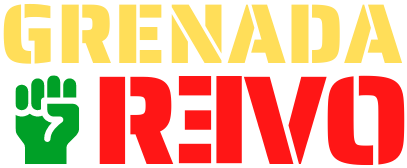The New Jewel Movement was a leftist political organization formed in Grenada in 1973.
Early Days of NJM
Officially established on March 11, 1973, the organization was a combination of two (2) separate groups: MAP (the Movement for Assemblies of the People), led by Maurice Bishop and J.E.W.E.L. (Joint Endeavor for Welfare, Education and Liberation), led by Unison Whiteman.
Teddy Victor was elected as the Publications Secretary; Sebastian Thomas was Organizing Secretary.
Maurice Bishop described the group as ‘a political party aimed at raising consciousness and taking political power if the accepted processes didn’t allow for electoral change.’
The New Jewel newspaper was the major publication for the party with the motto: ‘Not Just Another Society – But a Just Society; Let Those who Labour Hold the Reins.’
The NJM Manifesto listed the difficulties faced by Grenada and then set forth a detailed program – a blueprint – that included a list of proposed measures to develop Grenada. The Manifesto placed an emphasis on self-reliance and seemed to anticipate many of the policies to be enacted by the future PRG.
The Fight Against Gairy
The newly-formed organization developed quickly as the leading opposition to Grenada’s then leader Eric Gairy and allegations of corruption.
NJM organized several demonstrations throughout the 1970s and took a great interest in the country’s education. For Grenada’s youth this interest offered hope for their future and as a result, students were routinely at the forefront of NJM demonstrations.
Following the disappointing outcome of an island-wide strike in 1974, the NJM admittedly needed to be more organized. This led to the decision to become a vanguard Marxist-Leninist organization. Secretly, and unannounced to many Grenadians, the NJM began a high degree of selectivity and training of Marxist-Leninist principles.
The NJM Takes Over
During the early morning hours of March 13, 1979, the NJM overthrew Gairy’s regime while Gairy was out of the country and formed the People’s Revolutionary Government (PRG) which became the de facto government of Grenada.
Within the organization, a group of core leaders known as the Central Committee became the decision makers of NJM and The People’s Revolutionary Army (PRA) was formed to protect the ‘people’s revolution’.
Key NJM members included: Maurice Bishop, Bernard Coard, Kenrick Radix, Unison Whiteman, George Louison, Selwyn Strachan,
NJM in Power
During the revolution, from 1979 to 1983, NJM and its government, PRG, instituted many changes: friendly relations with Cuba, agricultural campaigns, organizations for farmers and women and young people, adult education programs, construction of a new airport, more opportunities for high school and university education.
Many of these programs were funded with substantial foreign aid from Cuba, Libya, Syria, the Soviet Union, North Korea and several Eastern European workers’ states. Cuba provided military arms to the NJM and Cuban advisers held positions in the key ministries. Several NJM leaders and members also traveled to Cuba, the Soviet Union and the Eastern European Bloc for consultation and training.
This choice of political friends created tension with and hostility from the United States.
With Maurice Bishop at the helm, the PRG enjoyed mass support from Grenadians. But, there were blemishes.
Although promised, parliamentary elections were put on hold during the 4 ½ years that the PRG was in power.
The party took rather extreme measures to block any competing views. Those who publicly spoke out against the NJM and PRG policies were viewed as ‘counter’. Several media publications were closed. A number of people were detained – some for the entire 4 1/2 years of the revolution – without charges for what was identified as national security reasons.
The NJM Comes to an End
The widespread excitement initially created by the NJM overthrow and the party’s popularity began to wane by 1982 and cracks began to appear within the party’s leadership.
In September 1983, a proposal for joint leadership shared between Coard and Bishop was submitted by a faction of the Central Committee loyal to Bernard Coard. Bishop initially agreed and then reneged. Things went downhill from there.
Bishop was placed under house arrest by the Central Committee on October 13, 1983 and then freed 6 days later by a determined crowd of everyday Grenadians. In a desperate and ill-fated attempt to regain control, members of the PRA supposedly under the orders of the Central Committee gunned down Bishop and several of his top supporters at Fort Rupert on October 19, 1983. Grenadians and the rest of the world were stunned.
The party discontinued operation following the US Intervention of the island on October 25, 1983 although for many Grenadians, the NJM ended with the death of Maurice Bishop on October 19, 1983 remembered as Bloody Wednesday.
- What was the NJM? - The Grenada Revolution Online
- The Grenada Revo Story, Part 1Learn more about the backstory and the key players of the Grenada Revolution
- The Grenada Revo Story, Part 2The idea of joint leadership of the New Jewel Movement is proposed by members of the Coard faction.
- The Grenada Revo Story, Part 3Maurice Bishop changes his mind about joint leadership of the NJM and fellow Central Committee members react.
- The Grenada Revo Story, Part 4Tensions continue to rise in Grenada while Bishop remains under house arrest. A series of negotiations are attempted while hundreds turn out in mass protest.
- The Grenada Revo Story, Part 5October 19, 1983, the final day of the Grenada Revolution, ends in tragedy.

